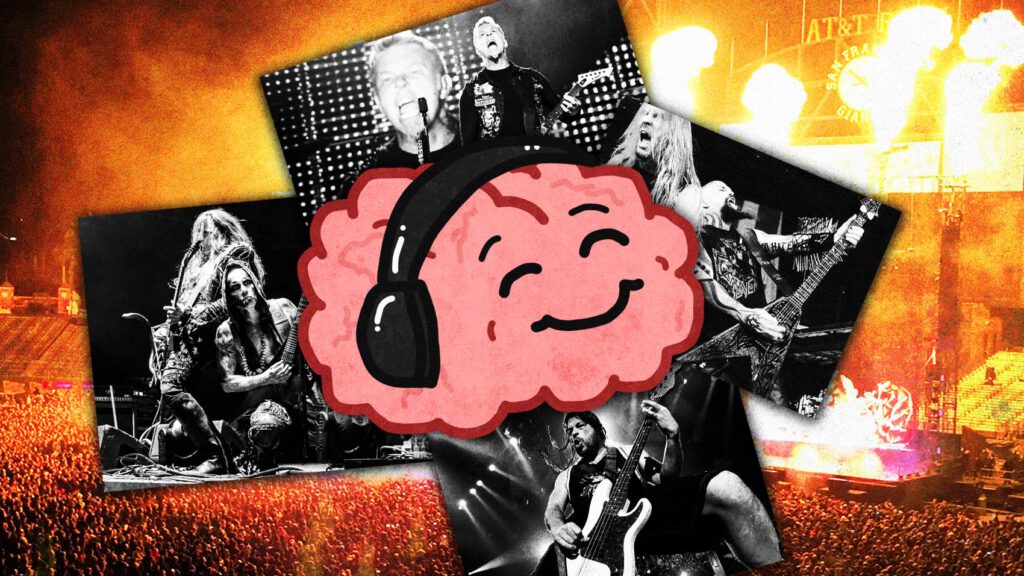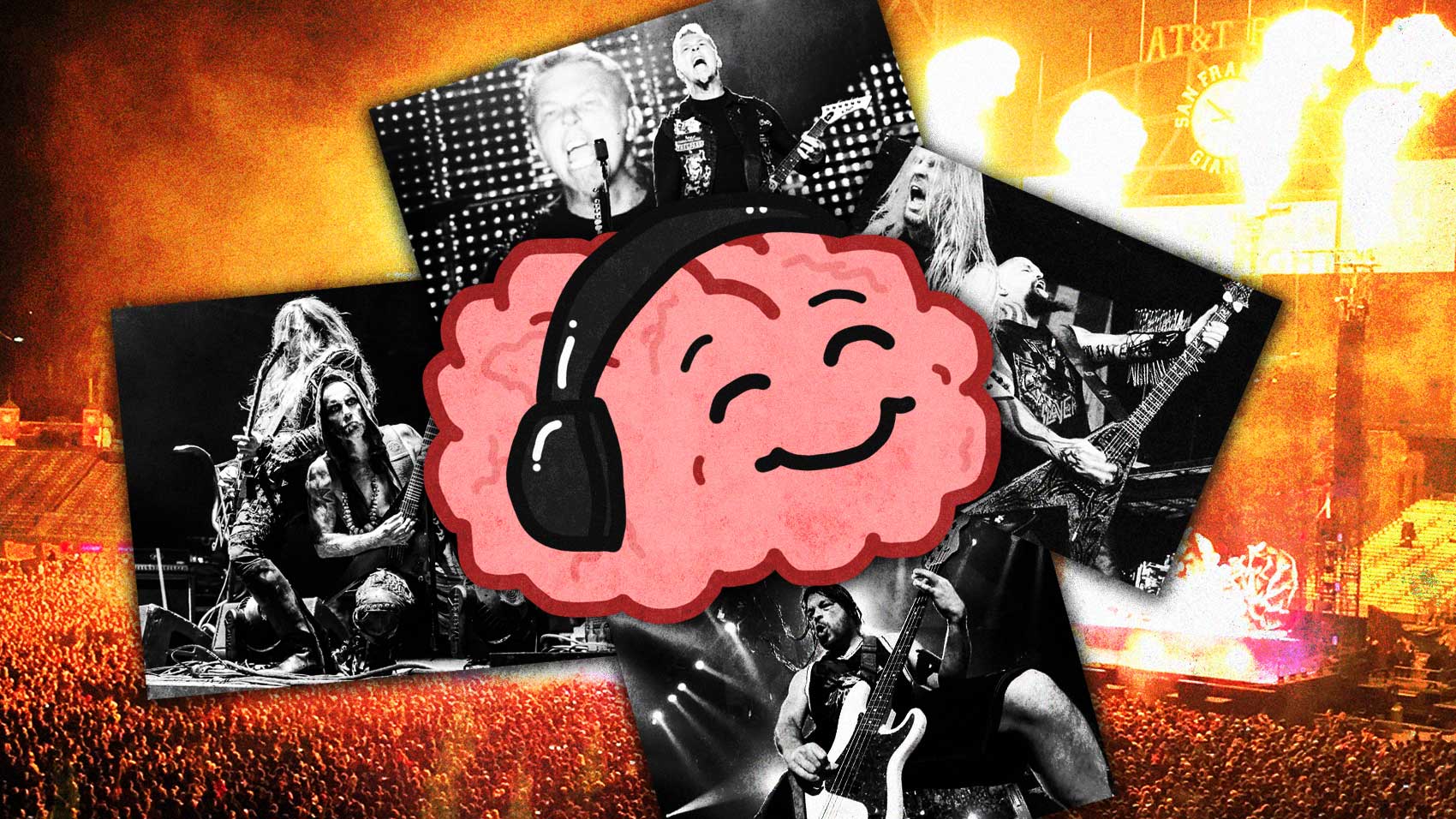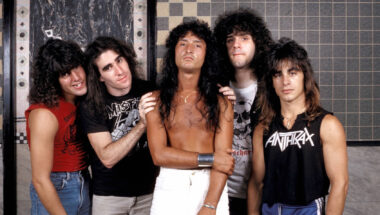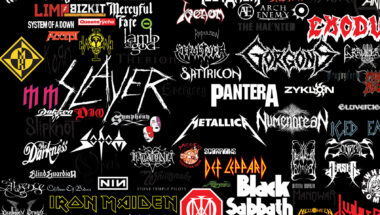Music therapy comes in many shapes and sizes, depending on the needs of a client. The basic consistency amongst therapists is that music acts as the conduit through which they connect with clients. Whether it’s in an attempt to alleviate anxiety, battle an addiction, or cope with tragedy, therapists use music as a tool to navigate rough emotional terrain and present a client with a sense of control. That might come from simply going to a live club show, or from sitting on the throne and flailing through drum solos.
For Mental Health Week, we here at Riot Fest wondered how even the most aggressive, severe styles of music can provide comfort and joy. We spoke with board-certified music therapist Jeffrey Wolfe, 37, about the soothing familiarity of four-chord progressions, how the novelty of a genre like heavy metal can play a key role during adolescence, and the physiological workouts our brains get when we play music. And we talked a little about Dream Theater. Just a little.
RIOT FEST: To begin, what are your specialties and qualifications within music therapy?
JEFFREY WOLFE: I work for a creative arts therapy agency called the Institute for Therapy through the Arts. We’re different in that we have four professions of creative arts therapy: art, dance/movement, drama, and music. I’m a music therapist with a specialization in neurologic music therapy. A lot of my background is about explaining music from a neuroscience model: How and why are things functioning in the brain—or from a physiological manner—during our interaction with music?
What exactly is the reach of the Institute for Therapy through the Arts within the Chicago area?
We have an in-house location in Evanston, Illinois, a campus out in the suburb of Lake Forest, and we partner with Columbia College downtown for private practice work. I’m the director of our community and school programming, which is all creative arts therapy. We partner with residential facilities, families with low resources, hospitals, nursing homes, memory care units, and school districts throughout Chicagoland. We’re widespread with about 13 creative arts therapists on staff.
We here at Riot Fest understand that music affects each of your clients differently. But in your experience, how does an intense style of music—let’s say black metal, for instance—prove to be therapeutic for a client… As opposed to, say, folk music?
A preferred music often does one or two things. It can satiate, causing a feeling of control and normalcy. I’ll often ask my clients what it is about four-chord progressions—even though they get made fun of all the time—that makes us keep coming back to them? It’s because they offer a normalizing effect. We don’t know why we recognize a song to be typical, but if someone uses a four-chord progression, we’re going to feel, “Oh, I know this song. Why is it so catchy?” It’s based in that normalcy.
That’s versus novelty, which releases dopamine or fills a crave. A novelty activates an automatic learning process, thus taking something from working memory to store into long-term memory. We think, “Hey, that’s cool. I should hang onto that.” If a piece of music changes every eight bars or so, it’s going to create a more novel experience. Music therapists will either try to make clients feel like they have control over situations or keep them motivated to make active changes in their lives through the music.
You made mention of four-chord progressions and the kind of coziness they summon—which is why they’ll never leave popular rock music. But with a genre that is a little more obscure, do you ever try to normalize the novelty?
Not necessarily. I grew up listening to Dream Theater, which is semi heavy metal but more experimental rock, too. I was a percussionist, so I loved playing more complex rhythms. I loved Mike Portnoy. During the identity piece of adolescence, you’re searching for ways to be different from your parents. You want to say, “Hey, I’m a human being. I have different needs.” That’s why a lot of teenagers relate to new music—the Beatles back in the day, Elvis before that. That novelty will never die. Those who might gravitate towards heavy metal during adolescence do it for a very specific reason. They want to say, “My parents can’t relate to me. This is the way I am, and these are my people.”
From the standpoint of energizing, there’s what music therapists call entrainment. When music hits a certain beat, from a subcortical process your brain’s ions start oscillating at the same rate as that beat. Before we can even think about tempos, our brains are activated. If we play something intense, we automatically entrain to that rate. A rhythm in sixteenths, for example, is going to energize. And to begin to de-energize—whether it’s with a crowd in a mosh pit or something else—you’ll be doing it in alignment with that tempo.
So there can be a sort of nostalgic familiarity with heavy metal. Even bands like Metallica or Slayer can provide comfort to someone who grew up listening to aggressive music.
Exactly. My step brother loves Metallica and anytime he’s in his truck on a long road trip that’s what he turns on. He can just jam out and feel comfortable. Even if the world is chaotic, one thing that can be constant is music.
For your clients in search of that comfort, what becomes the ultimate purpose of the process?
A sense of control where they may not have a sense of control in other areas of their lives. It depends upon what’s going on with that person, but it’s our job as music therapists to know that if heavy metal is the preferred music that’s where we’re going. Just last week, for example, a client asked to play Pantera, and he was surprised when the dropped-D lick wasn’t that hard.
We’ve mostly explored the angle of how music elicits responses at concerts or in live settings; or just by playing a record on a turntable. But how does experiencing music as a spectator differ from actually playing it?
If we get back to the neuroscience of it, when you’re receptive to listening to a piece of music, the motor cortex may be lighting up some. But when you’re actually playing music, it’s lighting up much more. You’re creating the rhythm, you’re thinking about sequencing, you’re using the working memory. Your emotional process becomes integral because you may be dealing with whether or not it’s hard to play. It’s much more of a brain and physiological workout, and music therapists can then do more with that experience. I’d say 90 percent of all music therapy is active music making. We’re always trying to move to the active music-making process. When someone is more active they’re going to be more engaged, there’s going to be more socialization occurring, and hopefully a decrease in agitation.




